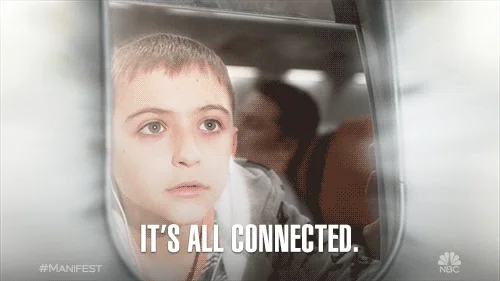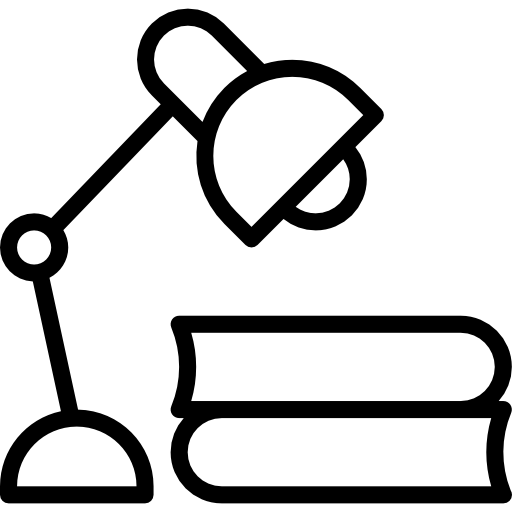Are you struggling to make sense of your sociology classes? Sociology isn't just about memorizing theories — it's about understanding people, systems, and society.
It can feel pretty overwhelming sometimes — with all the theories, big ideas, and examples to keep track of.

But the good news is, you don’t have to study it the same way you’d study other subjects. As a sociology grad and teaching assistant, I've collected some of the best study techniques and tricks to help you with your sociology classes!
Think Like a Sociologist
Before you begin studying, it’s important to grasp the nature of sociology as a discipline. Sociology is both conceptual and analytical, meaning it focuses on theories, social systems, and case studies.
Understanding what sociology is about will help you choose the most effective study techniques. Because sociology explores how different parts of society are interconnected, it’s useful to study in ways that reflect these relationships.

Sociology centres on three broad questions:
What systems and social influences shape our lives?
How do we interact with these systems?
What affects our behaviour and the way we relate to the world?
Keeping these questions in mind will guide your approach to learning sociology and help you connect ideas meaningfully.
Quiz
How is the main focus of sociology different from history or science? Select all descriptions that apply:
Study Techniques to Use
Sociology is all about understanding how different ideas, theories, and social systems connect with each other. Considering the nature of the subject, three of the most popular study techniques are mind maps, case studies, and the "summarize-and-teach" method.
 Mind Maps
Mind Maps
Mind maps are a great tool to help you visualize these connections. By creating a mind map, you can organize key concepts around a central theme and draw lines or branches to show how they relate.
Example: For deviance in society, put “Deviance” at the center. Branch out to functionalism (Durkheim), labeling theory (Becker), and conflict theory (Marx). Under each, add examples: laws reinforce norms (functionalism), labels shape identity (labeling), and laws protect the powerful (conflict).
 Case Studies
Case Studies
Sociology explores how people interact with each other and the systems around them— and that’s not always easy to capture when you study with a theory-focused approach.
That’s where case studies come in. They focus on using examples to help defend a stance, compare and contrast different possibilities, and better understand social patterns and trends.
By examining real-life examples, case studies make abstract concepts more concrete and relatable. Case studies are also an excellent study tool because they help you learn about different research methods — like interviews, participant observation, or questionnaires.
Example: Deepen your understanding of education and inequality by comparing two schools: one well-funded with small classes, the other under-resourced and overcrowded. This shows how schools reproduce inequality, connecting to concepts like social stratification and cultural capital (Bourdieu).
 Summarize and Teach
Summarize and Teach
"Learning happens by doing" isn't just a catchy phrase — it holds real power. Summarizing a concept in your own words, like you're teaching someone, will check your understanding, reveal gaps, and strengthen retention through active engagement.
This mirrors the well-known Feynman study technique, which involves choosing a concept, explaining it simply (as if to a 12-year-old), then reviewing and refining your explanation to deepen understanding.
Match the Study Technique to the Task
Studying isn’t one-size-fits-all, especially in sociology. While memorization works well for key terms or definitions, deeper sociological concepts require more analytical and reflective study techniques.
What's more, different tasks and study goals often require a unique approach. Let's look at some examples!
 Mind Maps
Mind Maps
Mark has a pop quiz coming up in his sociology class and wants to review key theories and actively engage with the important features of each. He prepares by:
Reading through his lecture notes.
Watching educational videos on functionalism, conflict theory, and symbolic interactionism.
Creating a mind map to note his biggest takeaways.
In the mind map, each theory branches out with its main ideas, key thinkers, and real-world examples.
By visually organizing the information, Mark strengthens his recall and sees how the theories connect.
Case Studies
Sofia is a math major and isn't used to subjective social and cultural analyses in her classes. For her sociology elective, she wants to sharpen her critical thinking skills and become more comfortable with formulating case studies for her assignments.
She starts a small sociology debate club with classmates, where they tackle a different sociological question each week, like “Does social media strengthen or weaken community?” Members research theories and relevant happenings, present arguments, and respectfully challenge each other’s ideas.
In her debate club, Sofia practices analyzing different perspectives and "grey areas", connecting theory to evidence, and building confidence in applying sociology outside of class.

Apply It!
Meet Amira 👋
 Photo by Giampiero Fanni on Unsplash
Photo by Giampiero Fanni on UnsplashAmira is a biology major in her first sociology class. She’s used to studying with facts and formulas, but now she’s asked to write a paper on cross-cultural dining practices — for example, eating with hands, chopsticks, or forks, and whether meals are shared or served individually.
She’s not being asked to decide which practice is “better,” but to explore how cultural values shape behavior. Amira feels uncomfortable and confused by the lack of a clear “right” answer.
What study technique would best help Amira succeed in this assignment?
A. Memorizing definitions of key sociological terms
B. Reviewing scientific studies on cultural biology
C. Using case studies to explore cultural norms
D. Practicing multiple-choice questions about social institutions
Quiz
What study approach would best help Amira succeed in this assignment?
Use the Whole Brain
Using multi-sensory and multimodal learning techniques keeps studying fresh and engaging by tapping into different parts of the brain. Educational neuroscience suggests that using different approaches strengthens memory, builds new neural pathways, and makes content more meaningful.
Wondering how? Try these study techniques to call in all your senses:
Visual: Create mind maps, diagrams, or use graphic organizers to see how ideas connect.
Auditory: Record lectures, listen back, discuss concepts with classmates, or recite mnemonic devices.
Reading/Writing: Re-write notes, summarize in your own words, or make flashcards.
Kinesthetic: Apply concepts to real-life examples, role-play, or teach others in a study group.

Quiz
Jalen is preparing for his sociology exam. He wants to remember a list of key sociological theories he’s learned about. Which study method would likely help him the most?
Take Action
Finding the style that works for you takes time and experimentation. Try mixing up your study techniques this week!

Small changes can help boost your learning and keep you engaged.
Your feedback matters to us.
This Byte helped me better understand the topic.
